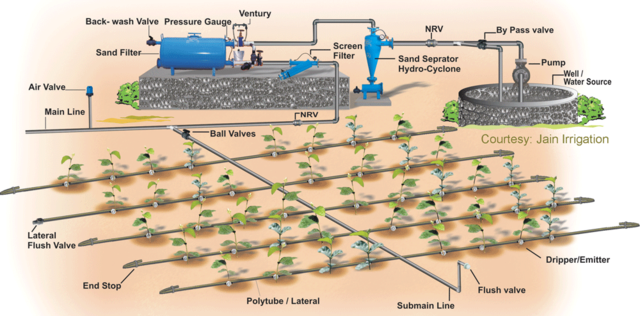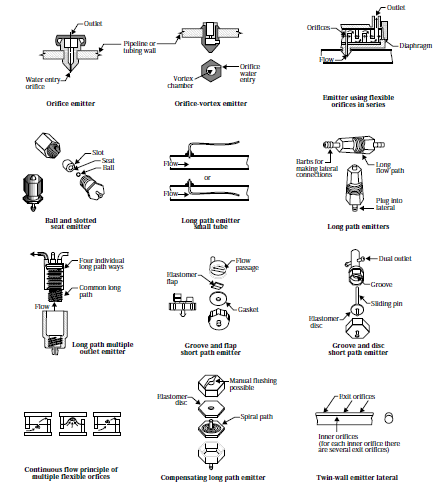Drip Irrigation
Jump to navigation
Jump to search
Drip irrigation is the targeted delivery of water to plants along water distribution lines emanating from a central water reservoir. Drip irrigation saves water and fertilizer by allowing water to drip slowly to the roots of plants.
Typical components for a micro irrigation system include the reservoir, control valve, filter, main pipe, lateral pipe, and micro-tube/emitter. This type of system covers an area between 20 m2 and 1000 m2. The layout of each drip irrigation system is highly variable, dependent on the crop and field. Many emitters exist with different methods of water impedance, including vortex, tortuous path, long path, and groove and disk short path.
Other Pages
- Related: Subsurface Drip Irrigation
- Appropedia: Drip Irrigation
- Appropedia: CCAT Gravity fed drip irrigation
Calculations
- 1/4 GPH per emitter - 3 gallons emitted per day.
- 1" water line gets us 2000 gph [1]
- 6-12" space between emitters for rows
- Say we have 15 rows of trees per acre - and we are growing plants every 1'
- 3000 plants, all day.
- This gets us 3 gallons per plant
- We need water conservation - 25 gal per day. 1/4 of average.
- 6000 gal water per day usage.
- 2000 emitters to handle this.
- Grass needs 1-2 inches of water per week. 26k gal for 1 inch.
- Per week - we have 42k gal wastewater.
- Needs 2 acre of irrigation at 1 inch of water per week.
- Quarter acre pond is 400,000 gal. [2]
- Thus, sustainable wastewater volume for 240 people feeds 2 acres of septic fertigation. Safety factor of 5 gives us 10 acres, our allowance for Factor e Farm. This could well go with a 1/4 acre pond, which has reserve for 10 days of wastewater. The blackwater fraction of this is much smaller, so that greywater pit should probably be used near the house.

